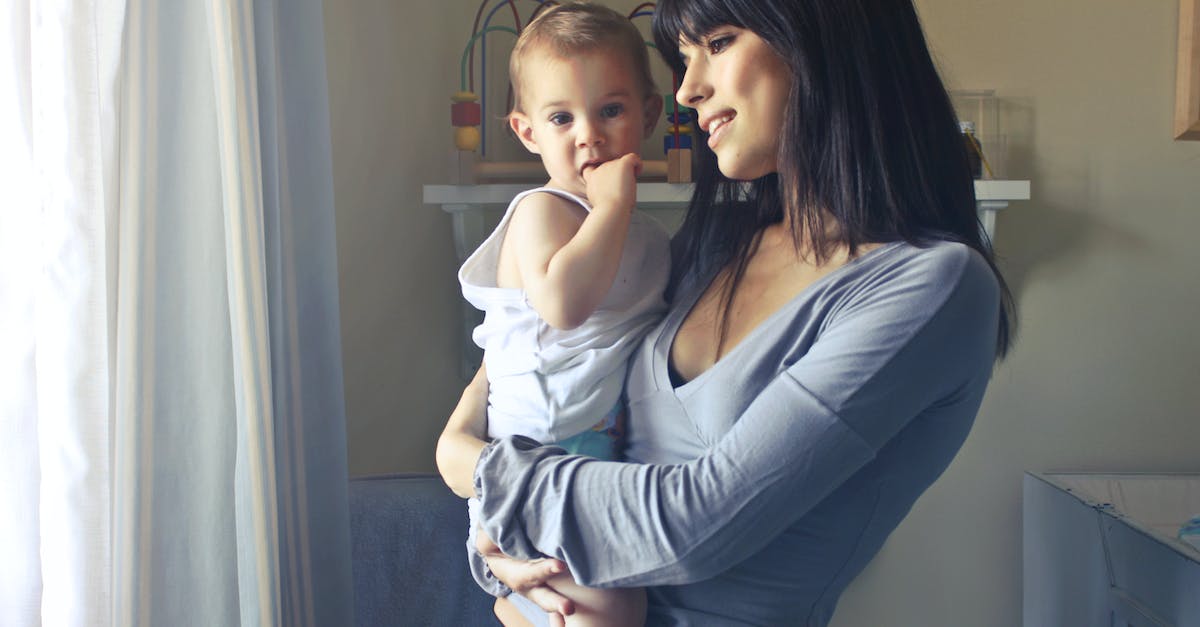It’s no secret that being a mom can be a tough job. But one of the most rewarding aspects of motherhood is watching your children grow and learn positive behaviors. As we all know, kids don’t come with an instruction manual, so how do we go about encouraging positive behavior?
It takes a lot of patience, consistency, and love, but it can be done! Here are some tips on how to encourage positive behavior in your kids.
First and foremost, it’s important to set the tone for positive behavior in the home. Modeling positive behavior yourself is the best way to do this. Kids are often quick to imitate, so be sure to demonstrate the behaviors you want to see in them.
Next, be sure to give your kids plenty of positive reinforcement for their good behaviors. Acknowledge and reward their efforts whenever possible, as this will help them to feel valued and will encourage them to continue to make good choices.
It’s also important to redirect negative behavior in a positive way. When your child is engaging in a behavior that you don’t want to see, provide them with alternative activities or activities that they can do to replace the negative behavior.
Finally, be sure to set clear expectations and boundaries in the home. This will help to avoid any confusion and will help your child to understand what is expected of them.
By following these tips, you can help to encourage positive behavior in your kids and create a loving and nurturing home environment.
Setting Clear Expectations

You want your kiddo to learn and grow, but it can be tough to know how to encourage positive behavior. One of the best ways to start is by setting clear expectations.
- Make sure your expectations are realistic. It’s not reasonable to expect a two-year-old to remember to brush their teeth every morning and night, but it is reasonable to expect them to try and put their toys away when they’re done playing.
- Be consistent. Kids need consistency and routine, so try to stick to a consistent set of expectations. If you don’t follow through on the rules and expectations yourself, your kids won’t either.
- Give positive reinforcement. Encouraging your kids when they do something right is a great way to reinforce positive behavior. A simple “Great job!” or “I’m so proud of you!” can be a big help in teaching them the right way to behave.
- Be firm but fair. While it’s important to be consistent, it’s also important to be understanding and flexible. When your kids misbehave, it’s important to be firm but fair. Remind them of the expectations, but also be willing to listen to their side of the story.
- Lead by example. Kids learn more from what they see than what they hear, so it’s important to lead by example. If you want your kids to be kind and respectful, show them what that looks like.
Setting clear expectations is a great way to encourage positive behavior in your kids. By making sure your expectations are realistic, being consistent, giving positive reinforcement, being firm but fair, and leading by example, you can help your kids learn the right way to behave.
Establishing a Positive Environment

Creating a positive environment for your kids is essential for helping them learn and grow! After all, it’s hard for them to be their best selves when the atmosphere is tense and unhappy. Here are a few tips to help establish a positive environment in your home:
- Be a role model. Your kids look up to you, so it’s important to show them what positive behavior looks like. Demonstrating kindness, respect, and self-control sets a good example for your children.
- Create family rituals. Having a few simple rituals, such as reading stories together at bedtime or having a weekly “family night,” lets your kids know that they are loved and valued. It also helps them to feel secure and connected to you and their siblings.
- Encourage open communication. Let your kids know that you are available to listen to them and talk about their feelings. Giving them a safe space to express themselves helps to cultivate trust and understanding between you.
- Provide positive reinforcement. Praise your child for their good behavior and provide rewards for effort and progress. This will help them to feel good about themselves and encourage them to keep up the good work.
Establishing a positive environment in your home is a great way to encourage positive behavior in your kids. With a little effort, you can create a loving and supportive atmosphere where your children can thrive!
Praising Positive Behaviour

Praising your child’s positive behavior is a great way to encourage them to continue showing good behavior. As a parent, you can create a positive feedback loop by rewarding positive behavior with verbal praise, high-fives, and hugs.
Be Specific
When praising your child, be specific about what behavior you are rewarding to make the praise more meaningful. For example, instead of saying, “Good job!” say, “I love how you are so patient when your sister takes too long to get ready. That shows great self-control.”
Be Timely
Be sure to praise your child right away after they show positive behavior. By praising them as soon as possible, you are reinforcing the behavior and showing your child that you noticed their good behavior.
Be Genuine
It is important to be genuine when you are praising your child. Your child will know when you are not being sincere, and that can be counterproductive. Make sure your praise is genuine and heartfelt so your child knows you mean it.
Modeling Good Behaviour

As a parent, you are your child’s most important role model. Modeling good behavior is one of the best ways to encourage positive behavior in your kids.
- Be a good example: Set a positive example by behaving in a way that you’d want your child to emulate. Show your child that you are respectful and can keep your cool in tough situations. Demonstrate good manners and ethical behavior, and your child will be more likely to follow suit.
- Show respect: Respect is key when it comes to parenting. Show your child that you value their opinions, feelings, and experiences. Demonstrate that you understand their point of view, even if you don’t agree with it.
- Lead by example: Show your child how to face challenges and use problem-solving skills. Let them see you make mistakes and apologize when necessary. Show them that it’s ok to admit when you’re wrong and that you can learn from your mistakes.
- Encourage self-expression: Allow your child to share their ideas and views and provide guidance when needed. Show them that it’s ok to express their feelings in a calm and respectful way.
By modeling good behavior and demonstrating respect, you can help encourage positive behavior in your kids.
Setting Consequences for Negative Behaviour

.
As a mom, you know how important it is to encourage positive behavior in your kids. But let’s face it – sometimes, they can be just plain naughty! When it comes to negative behavior, it’s important to set consequences to help your kids learn from their mistakes and become better people.
Here are some tips to help you set consequences for negative behavior:
Teach Your Kids about Consequences
Explain to your kids why consequences are important and why they must be followed. Make sure they understand that consequences are there to help them learn and grow and that they won’t be punished but rather be given a chance to learn from their mistakes.
Be Consistent
Make sure that the consequences you set are consistent so that your kids know what to expect. This will help them understand the importance of following rules and that negative behavior won’t be tolerated.
Be Fair and Reasonable
Don’t be too harsh with the consequences you set. Make sure that they are fair and reasonable and that they are appropriate for the age and situation.
Focus on the Positive
Rather than focusing on the negative behavior, focus on the positive. Talk to your kids about what they should be doing rather than what they shouldn’t be doing.
Be a Good Role Model
Show your kids that positive behavior can be rewarding by setting a good example for them. Lead by example, and your kids will be sure to follow.
Setting consequences for negative behavior can help your kids learn from their mistakes and become better people. With consistency, fairness, and some positive reinforcement, you can help your kids make the right choices and encourage them to be the best they can be.
Setting Limits and Boundaries

When it comes to setting limits and boundaries for kids, it’s all about consistency. Sure, you may have to remind them of the rules a few times, but when you’re consistent about it, they’ll start to understand.
Be Clear About Your Expectations
Explain to your kids the expectations that you have for them. This should be done in a calm and clear manner. Let them know what behavior is acceptable and what isn’t, and explain why it’s important that they follow the rules.
Stay Consistent
It’s important to be consistent when it comes to enforcing limits. If you set a rule and then don’t follow through with it, your kids won’t take your expectations seriously. So make sure you’re holding them accountable for their actions.
Set Reasonable Boundaries
Set boundaries that are realistic and age-appropriate. For example, a five-year-old shouldn’t be expected to stay in bed all night, while a fourteen-year-old should be expected to help out around the house.
Be Supportive
Let your kids know that even though you have expectations for them, you’re still there for them. Don’t be too hard on them when they make mistakes. Instead, offer encouragement and support.
Be a Role Model
Kids look up to adults, so it’s important that you model the behavior that you want from them. Show them that you can follow the rules and be kind and respectful.
Encouraging Self-Regulation

It’s no secret that children can be easily overwhelmed, and learning to self-regulate is key to helping them cope with big emotions. Self-regulation is a necessary life skill for children to learn, so it’s important to give them the tools they need to master it.
One way to help encourage self-regulation in kids is to give them time to cool down. When a child is feeling overwhelmed, take a few minutes to have them take some deep breaths and talk through what is going on. This can be as simple as counting to 10 or taking a few moments to collect their thoughts.
Take advantage of teachable moments. If your child experiences a situation that gets too overwhelming, give them the words to use to express their emotions. For example, if they are feeling angry, encourage them to say, “I’m feeling really angry right now, and I need a minute to cool down.”
Model self-regulation. Children learn by example, so it’s important to show them how to express and manage their emotions in appropriate ways. If you are feeling overwhelmed, talk through what you’re feeling and take a minute to practice a calming technique.
Explain the importance of self-regulation. Let your child know that it’s OK to feel their emotions, but it’s important to learn how to express them in healthy ways. Show them that a self-regulation is a tool they can use to better manage their emotions.
Give them practice. Role-play with your child and give them the opportunity to practice expressing their emotions in healthy ways. This will help them become more aware of their feelings and how to manage them properly.
Set a positive example. It’s important to let your child know that it’s OK to feel emotions, but it’s not OK to let them take control. Show them that you, too, are working on self-regulation and that it’s something everyone can work on.
Encouraging self-regulation in kids can be a challenging but rewarding journey. With a bit of patience and practice, your child can learn to self-regulate and better manage their emotions.
Staying Consistent

Staying consistent is the key to encouraging positive behaviors in your kids. Consistency sets the boundaries and parameters for acceptable behavior and helps children understand what is expected of them.
It’s important to be consistent in your expectations and consequences. If you set a rule, stick to it. If you offer rewards, make sure they are always given for good behavior. If you provide consequences, ensure they are always fair and appropriate.
It can be easy to be lenient with your children when they are behaving in a positive way, but it’s important to remain consistent. If you give rewards for positive behavior, make sure they are always given, and don’t forget to reward the small things.
It can also be tempting to give in to your children’s requests when they are being uncooperative. However, it’s important to remain consistent and stick to the rules you have set.
Don’t forget to also be consistent with yourself. If you make a promise, keep it. If you say you’re going to do something, make sure you follow through.
Consistency is key when it comes to encouraging positive behavior in your kids. Setting clear boundaries and expectations, rewarding positive behavior, and remaining consistent in your own behavior are all essential to creating an environment where positive behaviors are encouraged.
Conclusion
It’s clear that teaching children positive behavior don’t have to be a chore. By modeling the behavior that you want to see in your kids, setting clear expectations, and providing rewards and consequences, you can help shape the behavior of your children in a positive way.
The reward of a job well done is sometimes all it takes to encourage positive behavior. Kids love to be praised or rewarded for a job well done. Whether it’s a hug, a high-five, a sticker, or even a special treat, recognizing when your child has done something right is a great way to reinforce positive behavior.
Encouraging positive behavior in kids can be a lot of fun! It’s a great way to build a strong relationship with your child, and it will help your child grow into a responsible, respectful adult. So don’t forget to have fun, be patient, and reward positive behavior whenever you can!





